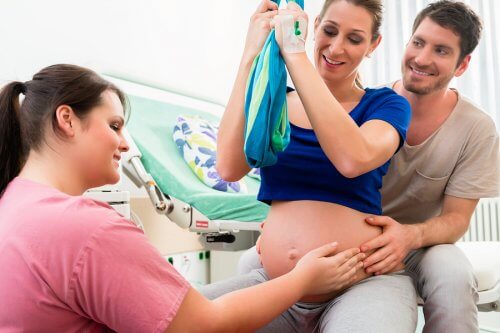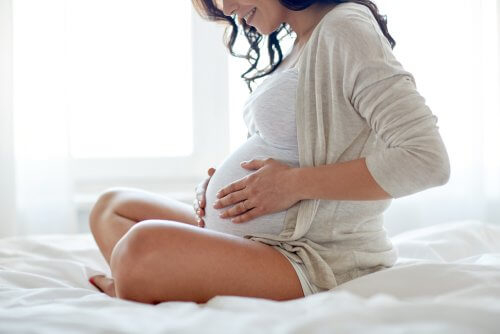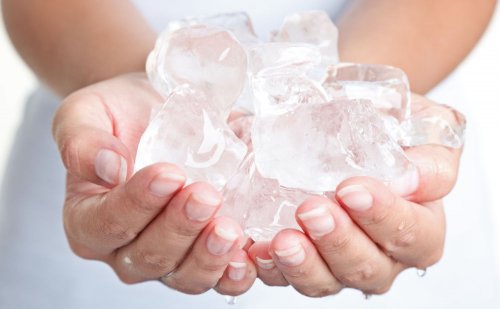What’s the Bonapace Method of Childbirth Preparation?

Labor is a painful experience. The muscle contractions and the pressure on the cervix and the vagina force the limits of the woman’s body and cause intense pain. The Bonapace Method is a new technique that seeks to naturally reduce that pain.
The Bonapace Method was created in Quebec, Canada by Julie Bonapace, an expert in pain therapy. This method is an educational process to learn how to manage pain reduction techniques during labor without the need for pharmacological treatment or medical interventions.
According to studies conducted by Dr. Bonapace with the University of Québec, the Bonapace Method reduces childbirth intensity of pain and discomfort by 45%.
The three mechanisms of the Bonapace Method

The Bonapace Method consists of three main mechanisms:
- Firstly, control of the central nervous system, which includes breathing, relaxation, and diversion of attention to modulate pain.
- Also, non-painful stimulation, such as light massage of the back, between labor contractions. The analgesia created by light massage is based on the Gate Control Theory.
- Finally, control to inhibit pain, which seeks to produce slight pain in other areas of the body to blur the pain of labor. When the brain searches for the source of the new pain, it releases endorphins throughout the body except in the area of the new pain. Endorphins relieve pain childbirth causes.
The medical professional evaluates the woman’s pain every 15 minutes during delivery to know which technique they should apply.
You should also read: Learn about Childbirth Preparation Classes
Learning as a couple
In the Bonapace Method, the father’s training and participation is essential, since they help the mother control her breathing and are in charge of massaging and applying pressure on the back, hands, and feet.
To learn to use the Bonapace Method techniques, the mother and father begin to study and train from six months of pregnancy. The courses consist of eight hours of Bonapace Method teaching and eight hours of information on traditional birth methods, pregnancy, and the childbirth process.
The 10 tips to overcome pain using the Bonapace Method
Education

The more knowledge there is about pregnancy and childbirth, the easier it is to manage pain. Dr. Bonapace recommends learning to use different techniques, as the mother’s needs may change during delivery.
This article may interest you: Women Need a Year to Recover After Childbirth
Have the support of your partner or a close person
Studies show that women who have a trusted person on their side experience less pain and need less pharmacological treatments or medical interventions than those who give birth alone.
Preparing that person is essential, since they’ll be the mother’s support during the process. Also, having someone who knows what to do at all times helps build confidence and reduce stress.
Stay active during labor
The pain helps to adjust the body and facilitate the passage of the baby through the pelvis. When that pain disappears with pain relievers or anesthetics, the sensation and physical communication between mother and baby is lost.
Use mantras

Mantras aid relaxation and concentration. In fact, the “ohm” aids breathing and opens the diaphragm, which creates space in the pelvis for the baby’s accommodation.
Massages: an essential technique in the Bonapace Method
When a stimulating sensation is created in the painful area, the pain signals that are transmitted to the brain are blocked. Back, thigh, and leg massages help relax the entire body.
Use water
At the right temperature, water helps to relax the muscles. The effects of water on the body block pain signals that are sent to the brain. Thus, experts recommend water baths during all stages of pregnancy and even during labor.
Use ice

When contractions begin, you can put your hands or feet in a container filled with ice and water. The “minor pain” from the ice helps release endorphins that act as a pain reliever. As a result, the pain of contractions will decrease immediately.
Apply acupuncture according to the Bonapace method
Several studies have proved the calming effects of acupuncture. In the Bonapace Method, it’s used when the pain is more frequent and more intense to create a second pain point.
Talk to yourself
Thoughts create emotions that affect the body. Talking to yourself to convey calm and reassurance that everything is fine will help create feelings of relief and reduce your stress.
Emotional freedom techniques
This technique combines traditional Chinese medicine and psychology. It consists of applying acupuncture to specific points while expressing emotions and explaining pain at the time of delivery. Doing this reduces cortisol, the stress-causing hormone.
All cited sources were thoroughly reviewed by our team to ensure their quality, reliability, currency, and validity. The bibliography of this article was considered reliable and of academic or scientific accuracy.
- Evaluation of the Bonapace Method: a specific educational intervention to reduce pain during childbirth Julie Bonapace, Nils Chaillet, Isabelle Gaumond, Émilie Paul-Savoie, and Serge Marchand. Département des Sciences de l’Éducation, Université du Québec en Abitibi-Témiscamingue, Rouyn-Noranda, Québec, Centre de Recherche de l’Hôpital Sainte-Justine, Université de Montréal, Montréal, Québec, Département de chirurgie, Faculté de Médecine et des Sciences de la Santé, Université de Sherbrooke, Sherbrooke, Québec. (2013). https://www.ncbi.nlm.nih.gov/pmc/articles/PMC3772779/
- The Bonapace Method. https://www.ncbi.nlm.nih.gov/pmc/articles/PMC3772779/
This text is provided for informational purposes only and does not replace consultation with a professional. If in doubt, consult your specialist.








